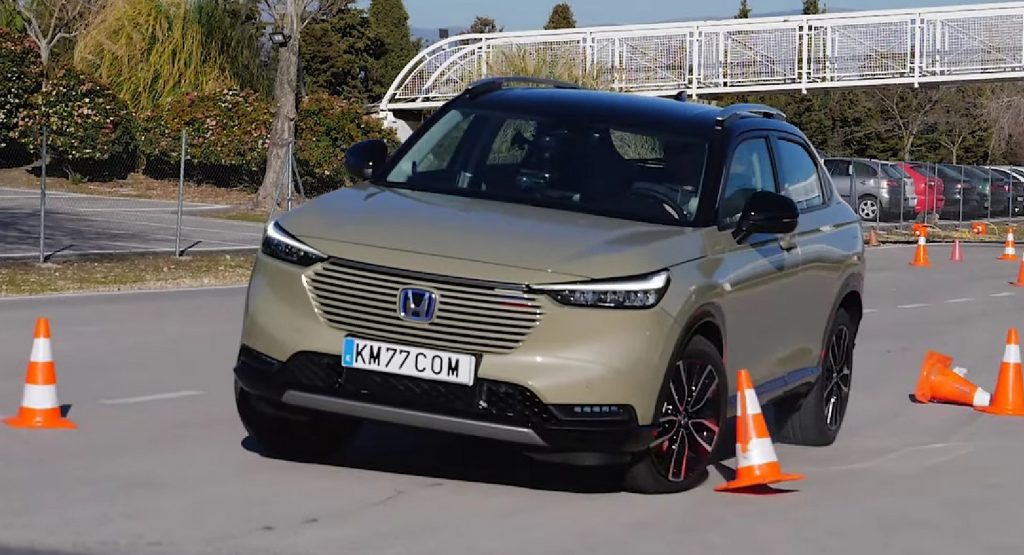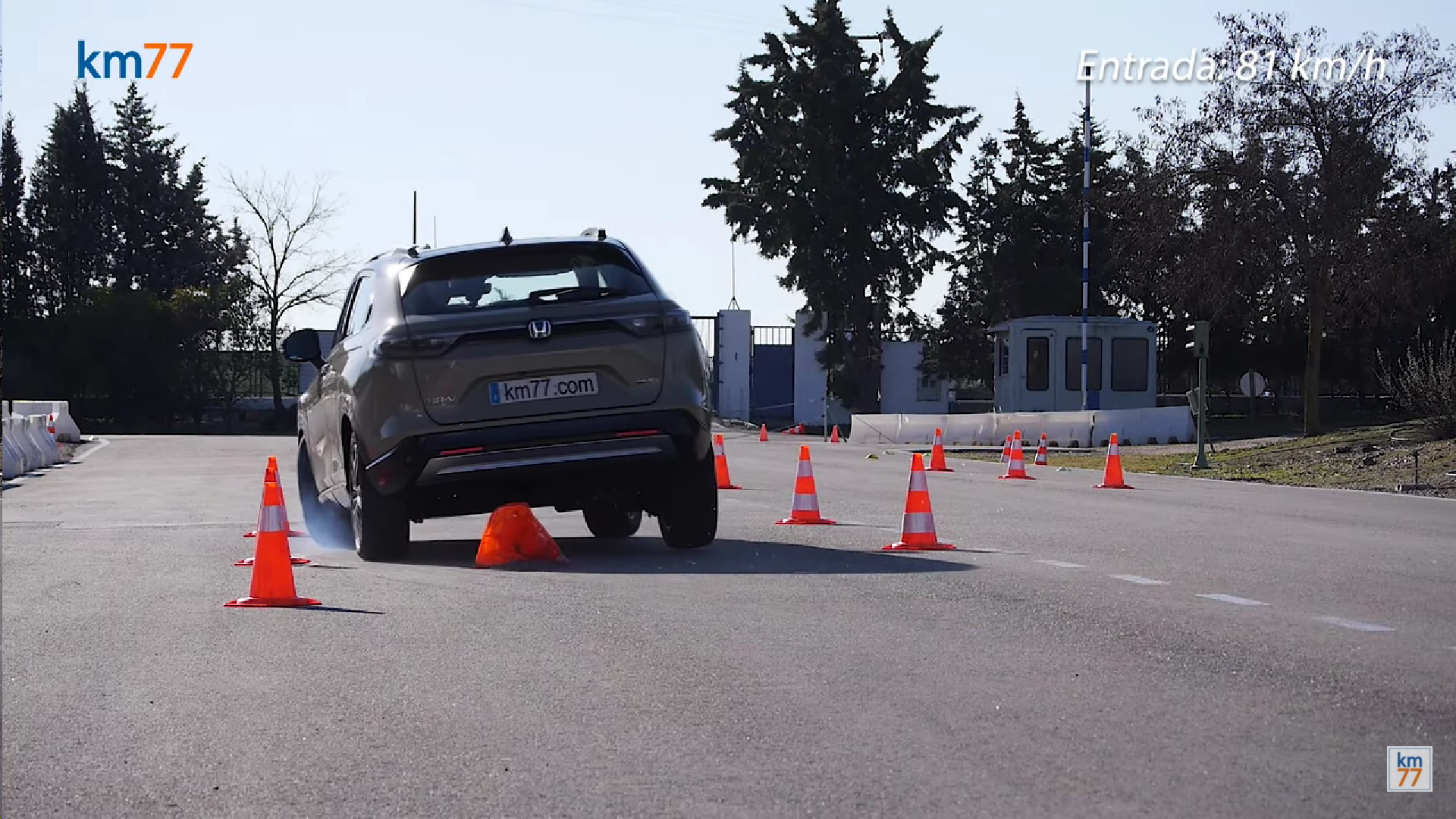The new European HR-V has impressed with its good looks and its hybrid powertrain but it can’t rise above its station in Spain’s famed moose test.
Powered by a 1.5-liter DOHC i-VTEC petrol engine that is paired to an electric motor to together produce 129 hp (131 PS/96 kW) and 187 lb-ft (253 Nm) of torque, the little crossover is capable of getting up to 62 mph (96 km/h) in 10.6 seconds and of returning 43.5 mpg (5.4 l/100km) on the WLTP test cycle.
Honda was also careful to package the batteries within the engine bay or chassis in order to provide as much space for passengers as possible. What does that mean for its ability to accomplish an evasive maneuver in which it darts from one lane to the next and back again?
Read Also: Cone-Killing Hyundai Ioniq 5 Can’t Match Tesla Model Y In Moose Test
The crossover doesn’t perform too badly but it doesn’t excel either, according to Km77.com. In its latest moose test video, the host attempts first to accomplish the test at 77 km/h (47.8 mph). Although he hits the first cone on the way into the lane change, he reports that the HR-V “showed good reactions”.
He admits that, in the video footage shot outside the vehicle, it appears to be bouncing through the maneuver but he says that the effect of that bouncing isn’t very noticeable from behind the wheel. After a few tries, he manages to run the test at a highest speed of 74 km/h (45.9 mph), which he calls a “low speed, but a good result for the SUV category.”
Indeed, in previous tests, the Dacia Sandero couldn’t do better than 73 km/h (45.3 mph), though the latest Audi Q2 managed to get through the test at 77 km/h (47.8 mph).
When the driver really pushes the HR-V, entering the maneuver at 81 km/h (50.3 mph), it understeers wide. Although that prevents it from completing the test at a higher speed, it is at least stable and doesn’t loop like the Skoda Enyaq iV electric SUV.





